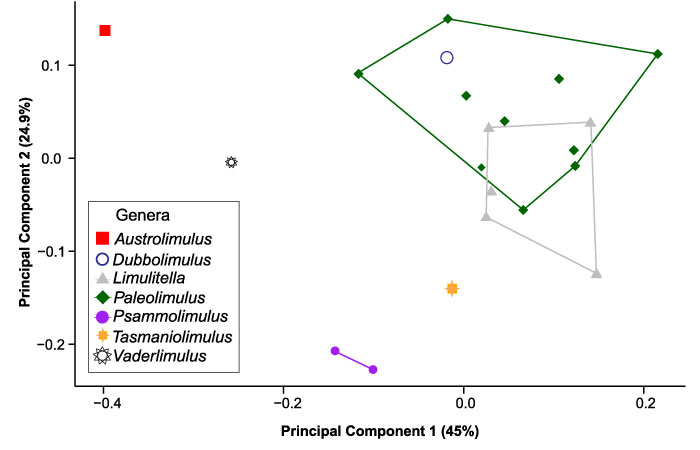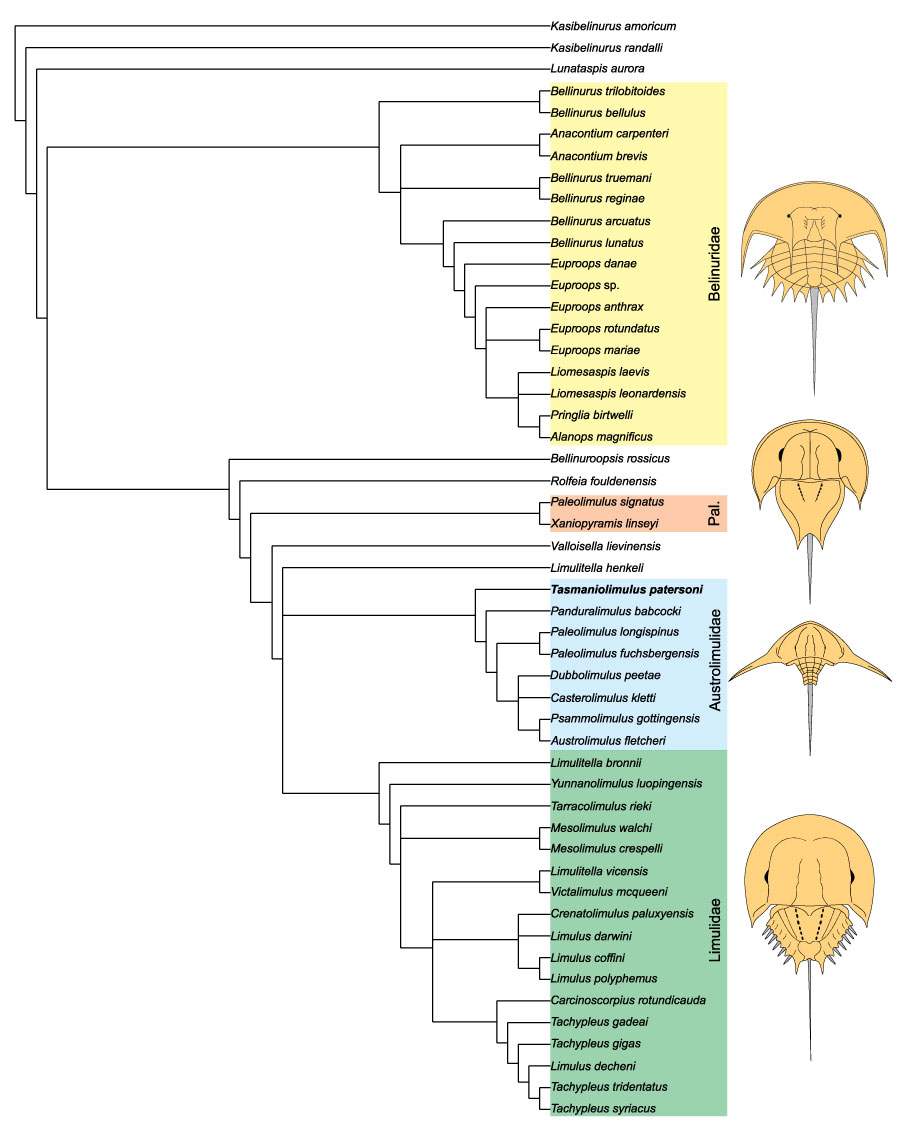FIGURE 1. Position of the fossil locality (yellow star) within the Jackey Shale at Poatina (41°48'05"S 146°53'06"E). 1. Outline map of Australia. 2. Outline map of Tasmania, red box shows studied area. 3. Area about the specimen locality. Geological data based on the map presented in Blake et al. (1956).

FIGURE 2. Tasmaniolimulus patersoni gen. et sp. nov., holotype (UTGD 123979). 1. Complete specimen. 2. Close-up of the left side of the cephalothorax showing the two cephalothoracic appendages preserved as impressions (white arrows), enlarged anterolateral spine on the free lobe (black arrow), and indentation in genal spine (grey arrow). Only the distal sections of the appendages are preserved. 3. Close-up of right side of cephalothorax showing indentation along the genal spine (white arrow). 4. Close-up of cephalothorax showing prominent interophthalmic and ophthalmic ridges, and ‘M’-shaped terminus of ophthalmic ridges. 5. Close-up of thoracetron showing expression of apodemal pits and pronounced axial ridge. Specimen was coated with ammonium chloride.

FIGURE 3. Reconstruction of Tasmaniolimulus patersoni gen. et sp. nov. Telson length is based on length preserved in other taxa. Reconstruction credited to Katrina Kenny.

FIGURE 4. Xiphosurids in PCA space. Austrolimulids occupying almost all parts of PC space, except the most positive PC1 space. Tasmaniolimulus patersoni gen. et sp. nov. falls at the extreme edge of the convex hull occupied by Austrolimulidae.

FIGURE 5. PCA plots showing morphospace occupied by xiphosurid genera. Xiphosurid genera are bound by convex hulls. Tasmaniolimulus patersoni gen. et sp. nov. is not bound by any convex hull, excluding the specimen from other genera.

FIGURE 6. Xiphosurid phylogeny colour coded for major families. Tasmaniolimulus patersoni gen. et sp. nov. (in bold) is located at the base of Austrolimulidae. Other clades coded into this phylogenetic matrix were not presented as they are not changed from Lamsdell (2016) and do not relate directly to the research presented herein. Abbreviation: Pal.=Paleolimulidae. Reconstructions courtesy of Stephen Pates.


